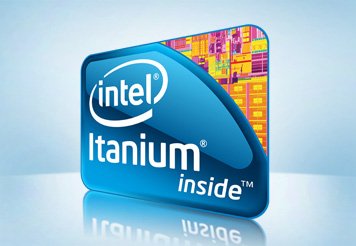Intel has launched a fresh line-up of Itanium 9500 processors, previously known as codename Poulson chips.
The new chips offer double the number of cores and double the performance of their predecessors, improving the reliability through some new features too, Intel claimed.
The tech giant also announced the next generation of Itanium chips will be compatible with the same socket as the Xeon E7, giving Intel clients more choice in how to design their data centres.
Improving Itanium
Systems based on Itanium processors run in over 75 percent of the world’s Global 100 companies, across industries such as aerospace, energy, life sciences and telecommunications, according to Intel. This year, it has upgraded the architecture of the chip, claiming it now provides up to 2.4 times the performance of a previous generation Itanium 9350 processor, and offers 33 percent faster I/O speed.
 The new silicon uses the 32 nm process technology and contains 3.1 billion transistors. The company says it is the most sophisticated general purpose processor it has ever made.
The new silicon uses the 32 nm process technology and contains 3.1 billion transistors. The company says it is the most sophisticated general purpose processor it has ever made.
With Itanium 9500, Intel has increased the number of cores from four to eight, with processor frequencies ranging from 1.73 GHz to 2.53 GHz. Each processor includes up to 54 MB of on-die memory and supports up to 2 TB of RAM.
The new chips introduce Intel’s Instruction Replay Technology, which identifies potential errors and corrects them almost instantly.
Suggested uses for new Itanium silicon include business analytics, database management, large-scale enterprise resource planning (ERP) and customer relationship management (CRM) applications.
“In a world where businesses are increasingly dependent on IT for their competitive advantage, more and more business applications are rightfully called ‘mission critical’; they must be always available, highly responsive and extremely reliable. It’s for precisely these computing workloads that we’ve developed the Intel Itanium 9500 processor,” said Diane Bryant, vice president and general manager of Intel’s Datacenter and Connected Systems Group.
The implications of the “Modular Development Model” will mean that besides sharing some silicon design elements, future Itanium and Xeon processors will also fit into the same socket. The idea was first introduced in 2010, to help cut costs and develop features for both platforms at the same time. But the upcoming Itanium product family codenamed Kittson will be the first to be truly interchangeable with Xeon processors.
Itanium chips were at the centre of a recent spat between HP and Oracle. Last year, Oracle said it was stopping development of its popular database software for Itanium chips, claiming Intel had decided to discontinue the product line. HP executives argued that Oracle was contractually bound to support Itanium as part of a larger settlement between the two in 2010.
In August, Judge James Kleinberg handed HP the win, and Oracle was forced to continue support for Itanium-based machines. The software developer said it would appeal the decision.
How much do you know about microprocessors? Take our quiz!





